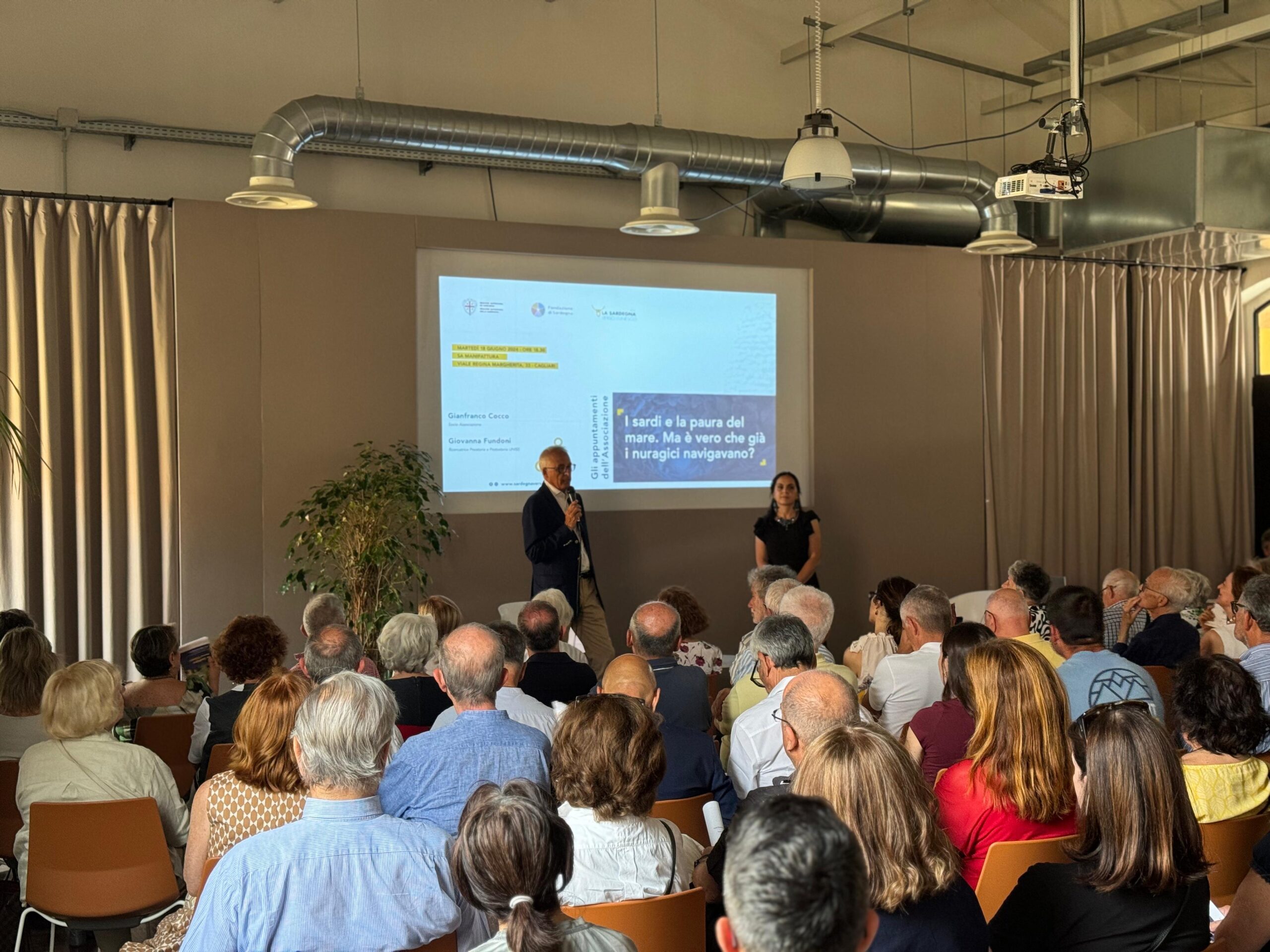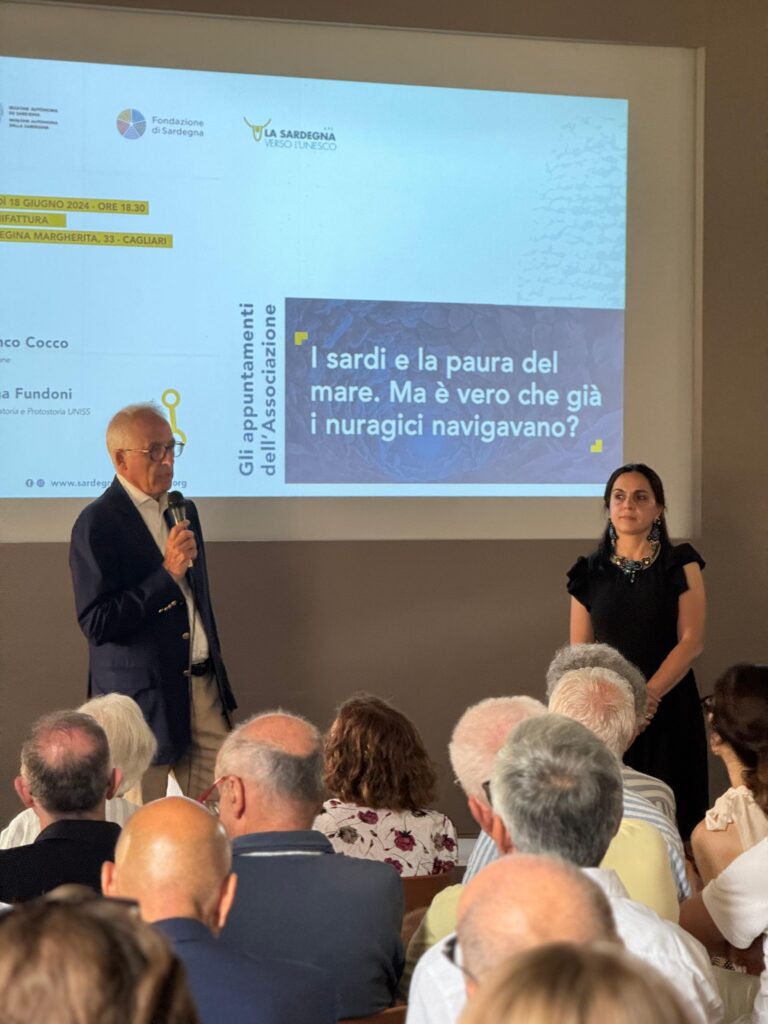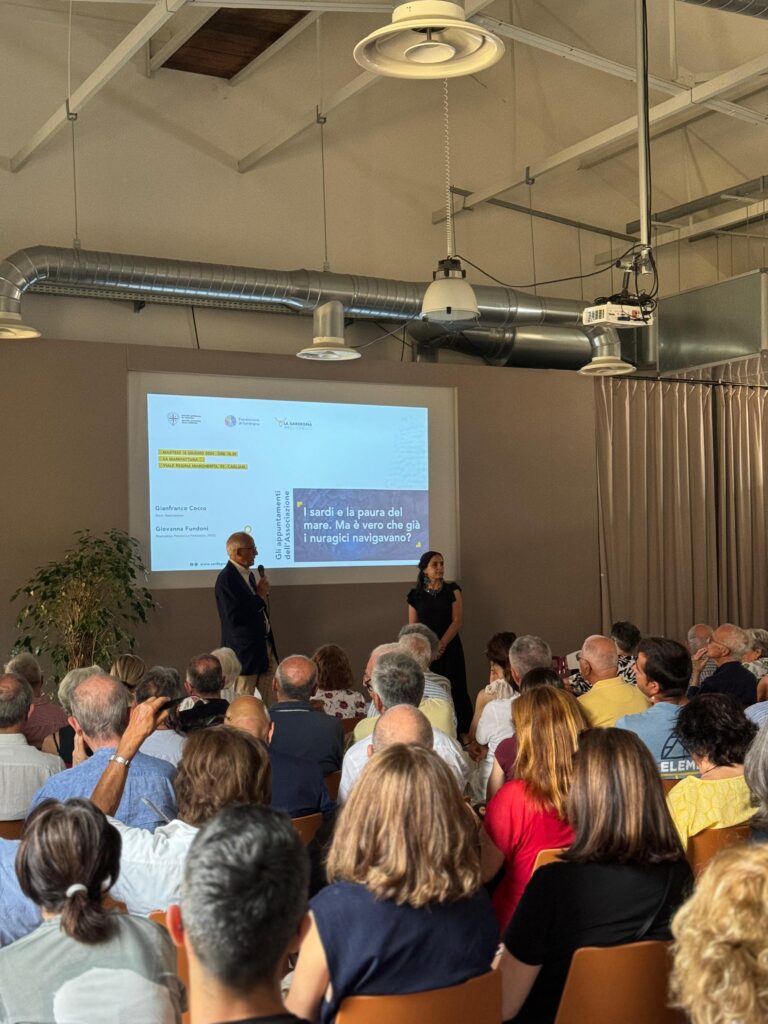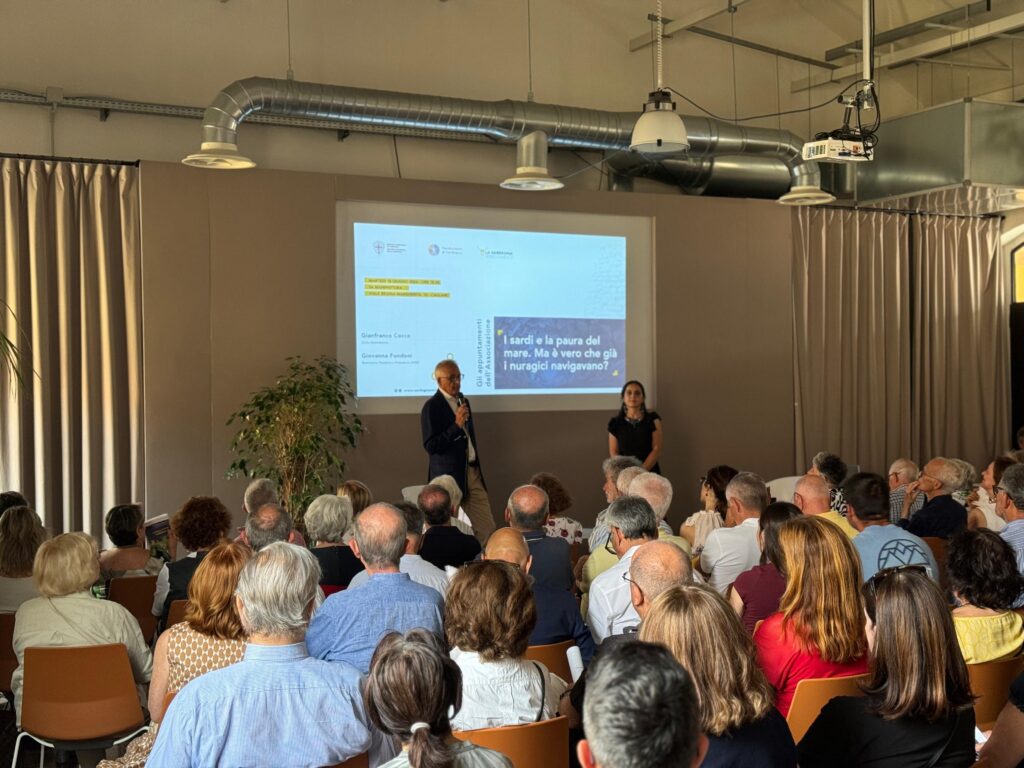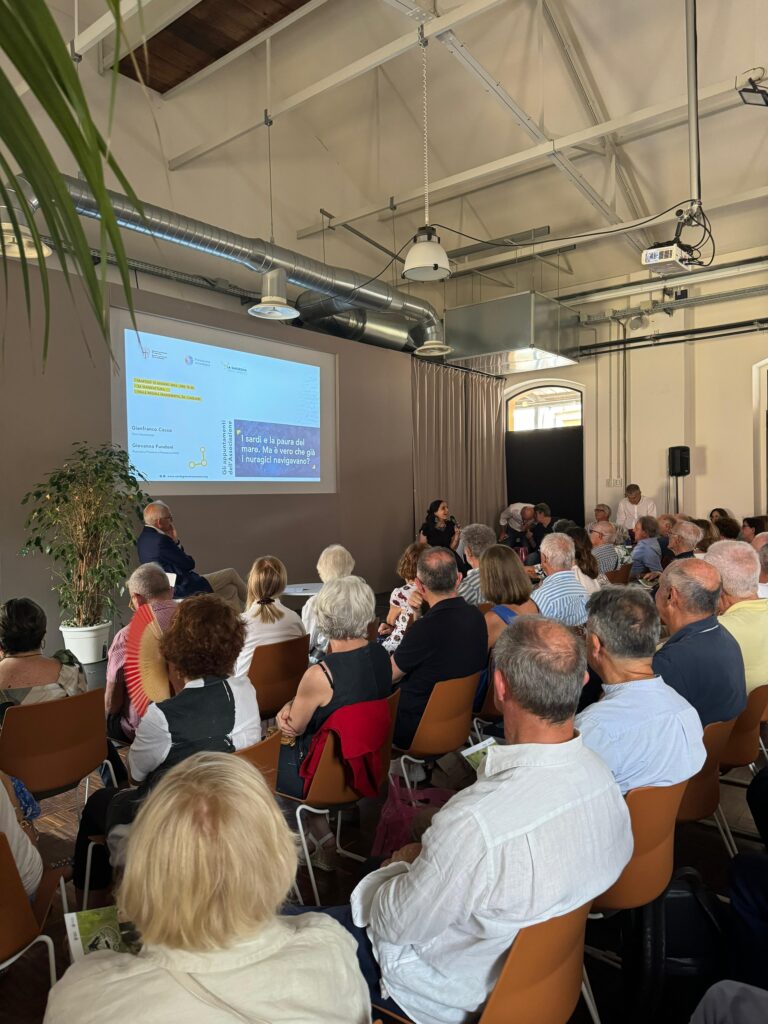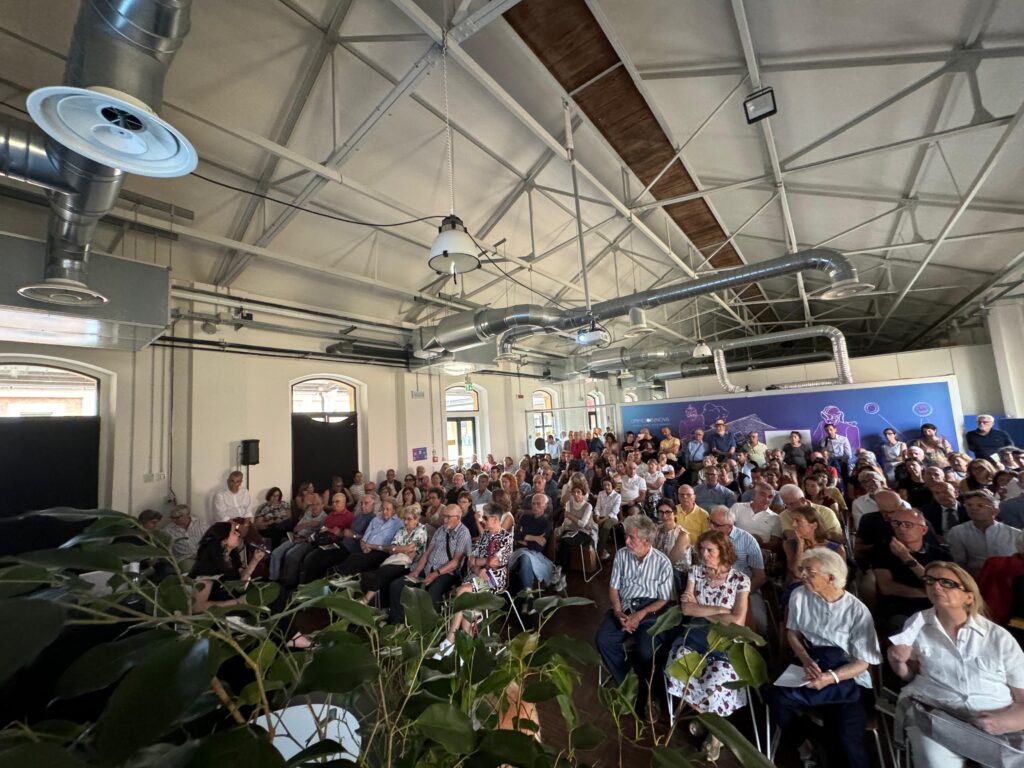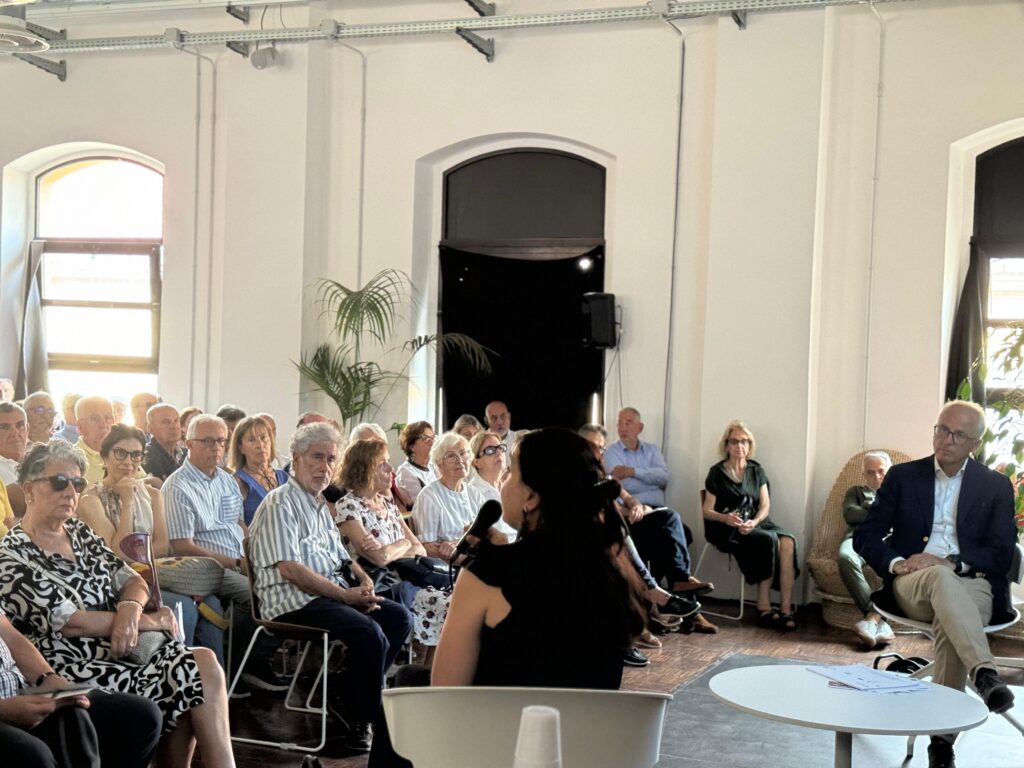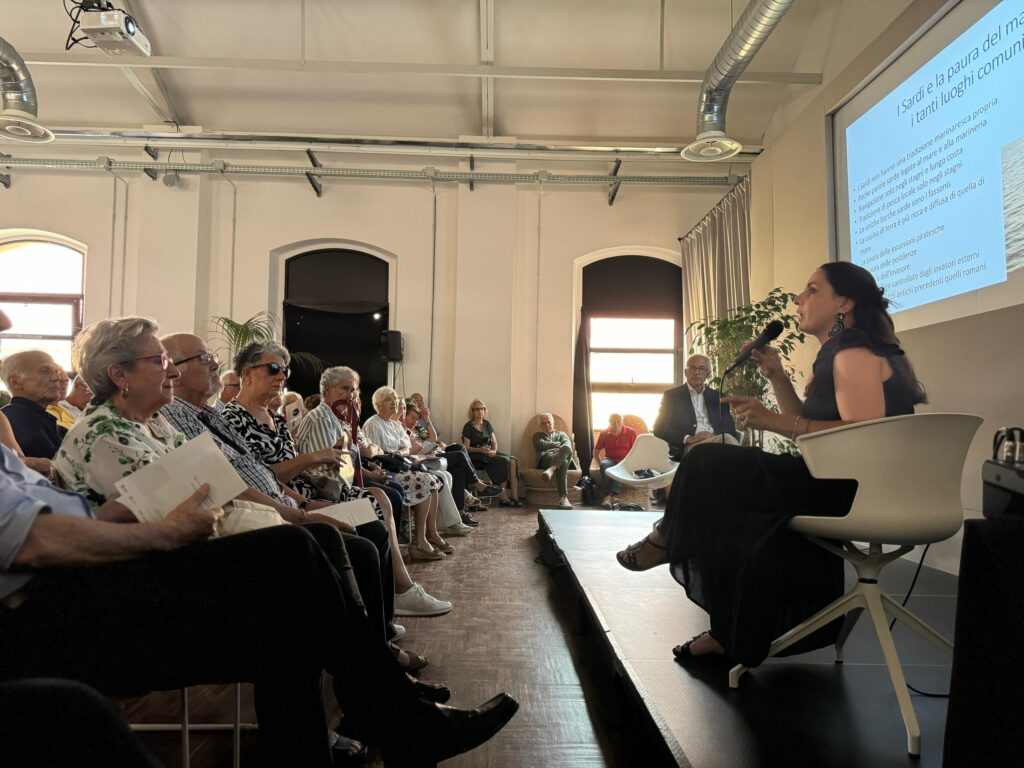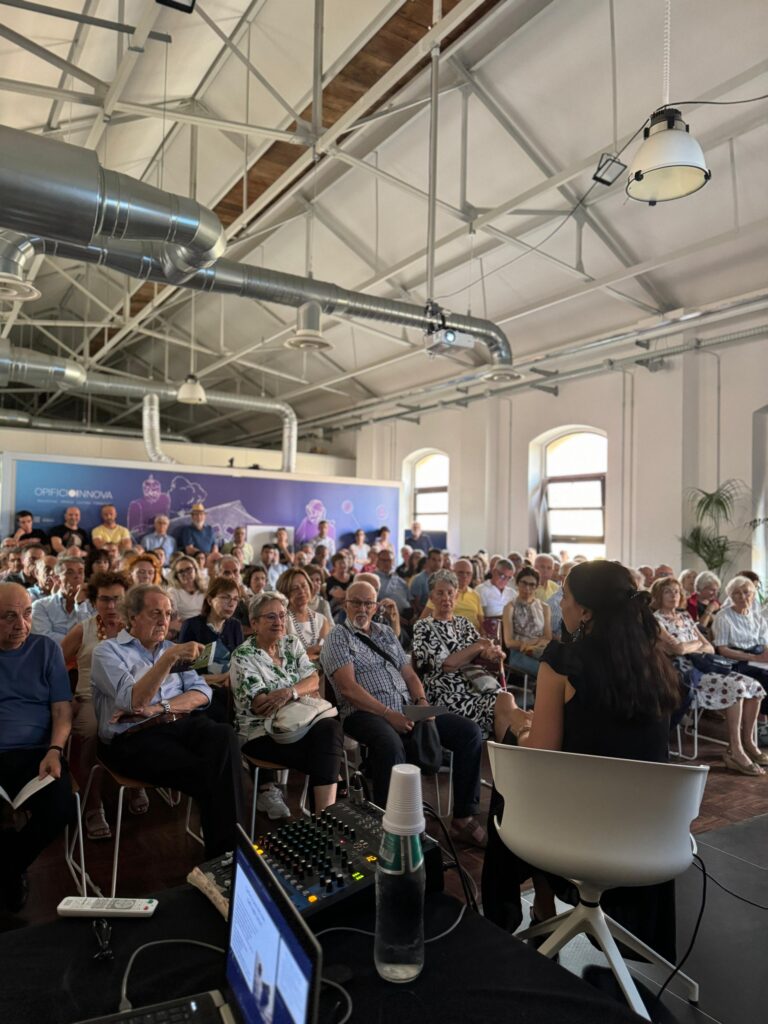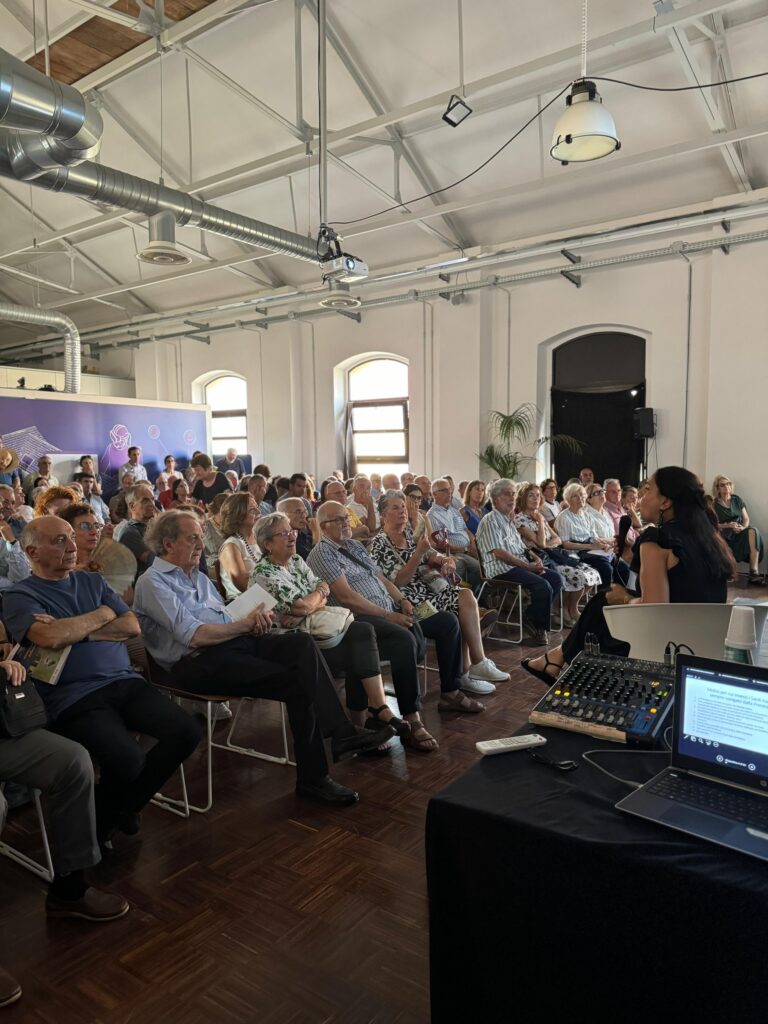“The Sardinians and the fear of the sea. But is it true that the Nuragic people already navigated?” This question, which gave its title to the event, launched the meeting on Tuesday, June 18, organized by our Association as part of the thematic conversations on the ancient Sardinian civilization at “Sa Manifattura” in Cagliari. To clarify the matter and delve into the subject, thus dispelling any doubts, was Professor Giovanna Fundoni, a researcher in prehistory and protohistory at the University of Sassari: Sardinians were navigating as far back as the Neolithic, not only during the Nuragic period. Certainly, the Nuragic people also traveled by sea.
To introduce what was the penultimate event of the 6 scheduled and startedMarch 26, it was Gianfranco Cocco, a member of our Association, who presented the Unesco nomination of the monuments of the nuragic civilization. An ambitious “journey” that the Association has been committed to for some time, Cocco explained, introducing a new vision of development for Sardinia through the recognition of the ancient Sardinian civilization by Unesco.
“Knowing one’s history, the changes, and new discoveries in archaeology is fundamental – explained Professor Fundoni at the beginning of her speech – because we all need to be aware of the history of our land.” In this context, the relationship between Sardinians and the sea, although a thorny subject, is certainly part of our History. Moreover, today we have the answer to the initial question: Sardinians were not afraid of the sea; the nuragics navigated, were present in the Mediterranean (and beyond), and traveled by sea.
There is even a real case that testifies to the navigation of the nuragics. It concerns the remains of a cargo from a vessel found off the waters of Arbus: lead ingots (similar to those from the nuragic era), fragments of materials including ceramics recognizable as nuragic. This could be the only Sardinian wreck from the nuragic period, but we do not have certainties. However, it is certainly a small trace of nuragic navigation.
But the reasons that help us understand how Sardinians have always navigated in Prehistory, analyzed one by one by Professor Fundoni, are many.
In the meantime, Sardinia is an island at the center of the Mediterranean, a fundamental position, Fundoni explained, to the point that the maritime movements of Sardinians and other peoples towards Sardinia almost seem obvious.
Secondly, prompted by the reflections provided by the researcher, the question arose: “Can a people live on an island without ever having the curiosity to cross the sea, especially where the mainland is visible on the horizon (Corsica)?” The answer is certainly negative, Fundoni explained before delving into the details of the traces of habitation and life on the small islands of Sardinia since Prehistory (La Maddalena, the Island of Mal di ventre, Asinara, for example) which are obviously reachable only through sea navigation.
As the narration at Sa Manifattura became increasingly engaging, one concept became clearer: the settlement of the island also occurred via the sea. “The process of neolithization (agriculture, livestock, ceramics) comes from the sea, with groups of individuals who brought innovations and left clear traces in our DNA,” explained the researcher.
Another element in favor of the nuragic propensity to navigate: the similarities and contacts with Corsica since Prehistory, evident for example in many artifacts such as the vases of Gallura and the vases of Corsica or in the architecture of the torricorse which rest on the same basic concept as the nuraghi. And then the traffic of obsidian, with Sardinia being the protagonist of exchanges that reach throughout the Mediterranean from the Island.
And what about the common Sardinian vases found outside Sardinia? Dishes, for example, or other materials from the culinary and food traditions of the nuragic age found in other places (for example in Crete), faithful witnesses of navigation reaching lands far beyond the boundaries of the Island.
Finally, the “navicelle,” those bronze vessels that represent boats, a testimony, the researcher explained, of how Sardinians reproduced something they knew well: navigation.
One last curiosity: are there nuraghi by the sea? Yes!
The conversations that have engaged our Association since March will concludethe 2nd of Julywith Emanuela Abis and Barbara Argiolas, territorial strategic consultant, who will together address a crucial topic for the future of our Island titled “Brand ‘Isola dei nuraghi’. What has gone wrong so far?”.
Introducing what was the penultimate appointment of the 6 scheduled events that began on March 26, Gianfranco Cocco, a member of our Association, presented the Unesco candidacy of the monuments of the nuragic civilization. An ambitious “journey” that has long seen the Association engaged, Cocco explained, introducing a new vision for the development of Sardinia through the recognition of the ancient Sardinian civilization by Unesco.
“Knowing one’s own history, the changes, and the new discoveries in archaeology is fundamental,” explained Professor Fundoni at the beginning of her speech, “because we all need to be aware of the history of our land.” In this context, the relationship between Sardinians and the sea, while being a thorny topic, is certainly part of our history. Not only that, today we have the answer to the initial question: Sardinians were not afraid of the sea; the nuragic people sailed, were present in the Mediterranean (and beyond), and traveled by sea.
There is even a real case that testifies to the navigation of the nuragic people. It concerns the remains of a cargo from a ship found off the waters of Arbus: lead ingots (similar to those from the nuragic era), fragments of materials including ceramics recognizable as nuragic. This could be the only nuragic wreck in Sardinia, but we do not have certainties. However, it is certainly a small trace of nuragic navigation.
But the reasons that help us understand how Sardinians have always navigated in Prehistory, analyzed one by one by Professor Fundoni, are many.
First of all, Sardinia is an island at the center of the Mediterranean, close and yet far from everything. The central position of Sardinia was fundamental, Fundoni explained, to the point that the maritime movements of Sardinians and other peoples toward Sardinia were almost obvious.
Secondly, prompted by the reflections provided by the researcher, the question arose: “Can a people live on an island without ever having the curiosity to cross the sea, especially where the mainland is glimpsed on the horizon (Corsica)?” The answer is certainly negative, Fundoni explained before delving into the details of traces of habitation and life on the small islands of Sardinia since Prehistory (La Maddalena, the Island of Mal di ventre, the Asinara, for example), which were obviously reachable only through navigation at sea.
As the narrative at Sa Manifattura became increasingly engaging, one concept became clearer: the settlement of the island also occurred via the sea. “The process of neolithization (agriculture, livestock, ceramics) comes from the sea, with groups of individuals who brought innovations and left clear traces in our DNA,” explained the researcher.
Another element in favor of the nuragic people’s propensity to navigate: the similarities and contacts with Corsica since Prehistory, evident for example in many artifacts such as the vases from Gallura and the vases from Corsica or in the architecture of the torricorse that rests on the same basic concept as the nuraghi. And then there is the trade of obsidian, with Sardinia being the protagonist of exchanges that reach throughout the Mediterranean.
And what about the common Sardinian vases found outside of Sardinia? Dishes, for example, or other materials from the culinary and food tradition of the nuragic age found in other places (for instance, in Crete), faithful witnesses of navigation that reached lands far beyond the borders of the island.
Finally, the “navicelle”, those bronze boats that represent ships, are a testimony, the researcher also explained, of how the Sardinians reproduced something they knew well: sailing.
One last curiosity: are there nuraghi by the sea? Yes!

